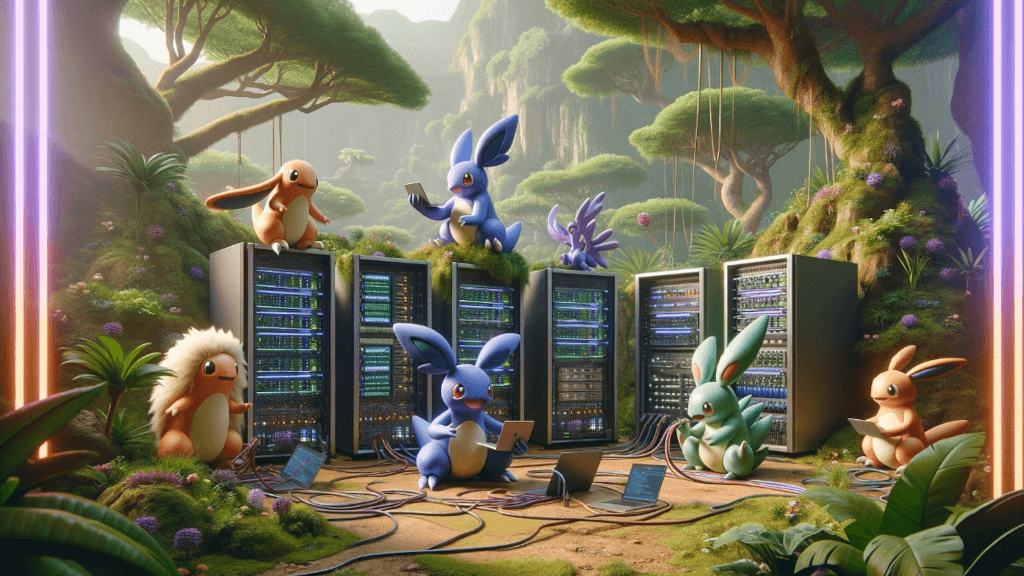In the ever-evolving realm of gaming, few titles have captured the collective imagination quite like Palworld, the monster-collecting survival game developed by the indie powerhouse Pocketpair. With a staggering 19 million players joining the fray, Palworld’s journey from a modest project to a global phenomenon is nothing short of extraordinary. Yet, this unprecedented success brings its own set of challenges, most notably the mammoth server costs that have recently come to light.
The Financial Anatomy of a Gaming Titan
Pocketpair’s CEO, Takuro Mizobe, recently shed light on the financial juggernaut that Palworld has become, revealing server costs projected to exceed 70 million yen (over $475,000 USD) for February alone. This figure is a testament to the game’s massive player base and the infrastructure required to sustain it. Yet, Mizobe’s light-hearted quip about potential bankruptcy from server fees only scratches the surface of a much deeper narrative.
Let’s dissect the numbers:
- Palworld has sold approximately 12 million copies on Steam, each priced at $30, culminating in a gross revenue of $360 million.
- Even after accounting for Steam’s revenue cut (conservatively estimated at 30%), Pocketpair sits comfortably with $252 million before expenses.
- With server costs amounting to $6 million annually, the financial prognosis for Palworld seems more than just stable—it’s thriving.
This financial breakdown paints a picture of a game that, while grappling with high operational costs, has managed to harness its success into a formidable business model.
The Backbone of Palworld: A Robust Server Infrastructure
Amidst the financial discourse lies the true hero of Palworld’s story—the game’s robust server infrastructure. Palworld’s network engineer, Chujo Hiroto, emphasizes the team’s unwavering commitment to reliability, stating, “Following the order to never let the service go down no matter what, we have prepared servers without regard to cost.” This dedication ensures that players can immerse themselves in the Palworld universe without interruption, a cornerstone of the game’s appeal.
To put the scale of Palworld’s server requirements into perspective, consider this: the game’s peak concurrency figures on Steam exceeded two million last month. Using Amazon’s game hosting service as a benchmark, these numbers easily translate into server costs exceeding a million dollars per month, depending on various factors such as game sessions per instance.
Palworld’s Path Forward
Despite its current success, Palworld’s journey is far from over. The game’s revenue model, notably devoid of microtransactions, sets it apart from many online games that offset high upkeep costs with continuous revenue streams like premium cosmetics and battle passes. This strategic choice, while noble, puts additional pressure on maintaining high sales and managing operational costs.
Furthermore, the gaming landscape is dynamic, with player counts naturally fluctuating over time. Pocketpair, however, is not resting on its laurels. Plans to increase the co-op player limit are on the horizon, promising to enhance the gaming experience but also potentially increasing server demands.
For the zealous Palworld community, the option to host dedicated servers supporting up to 32 players offers an alternative pathway to larger, more engaged gameplay sessions, further testament to the game’s commitment to its player base.
Conclusion
Palworld’s journey is more than a tale of financial figures and server statistics. It’s a testament to the transformative power of cloud technology, which has enabled even small indie developers like Pocketpair to navigate the high seas of gaming demand that once capsized industry giants.
As we marvel at Palworld’s success and its adept handling of the challenges that come with it, we’re reminded of the relentless innovation and resilience that define the gaming industry. For players and developers alike, Palworld is not just a game; it’s a beacon of what’s possible in the boundless realm of digital entertainment.



